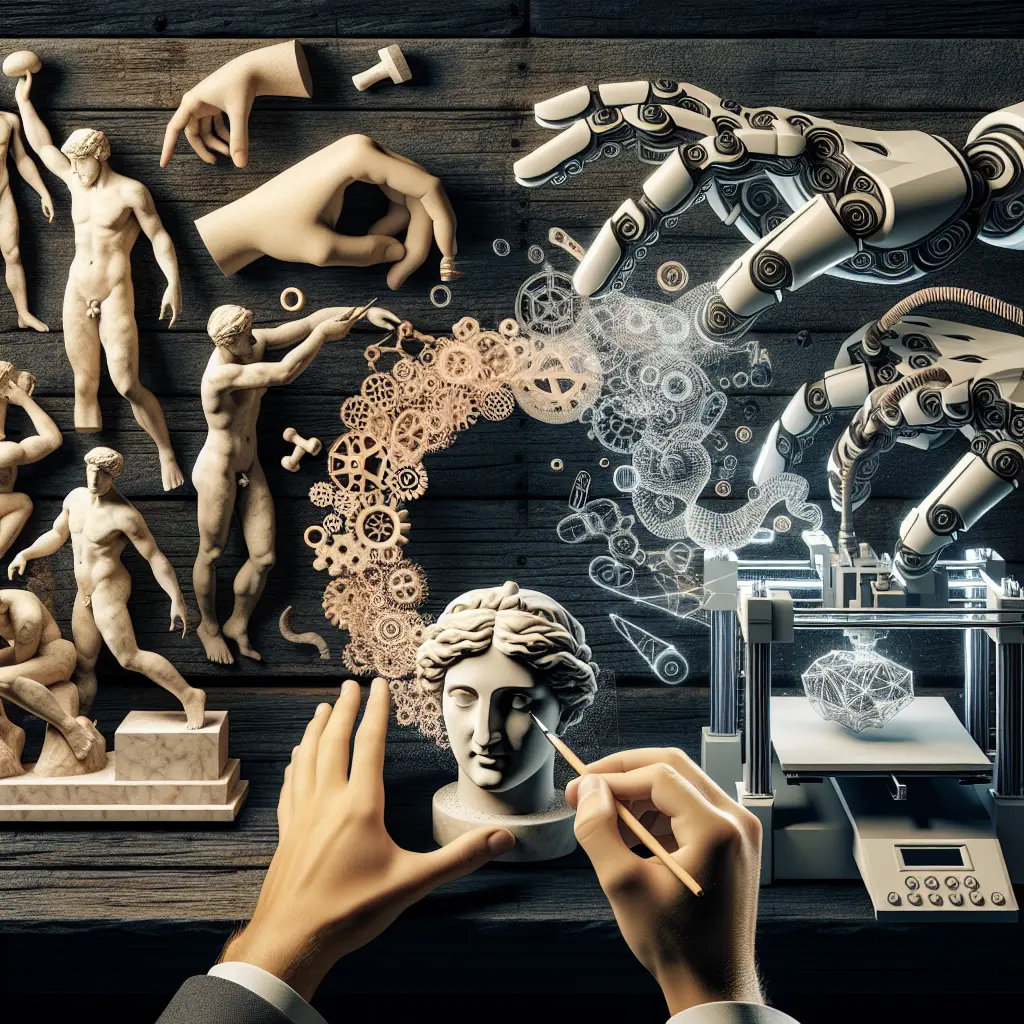
In the ever-expanding realm of art and technology, the fusion of digital sculptures and 3D printing is revolutionizing how we perceive and create art. This evolution is not merely a technological advancement but a transformative force reshaping modern sculpture techniques and enabling artists to push the boundaries of creativity. As we delve into this digital revolution, it becomes essential to understand how digital fabrication in art is redefining the future of sculpture.
Bridging Cultures Through Innovation: Sundial Mirage
A remarkable example of art and technology converging is the project Sundial Mirage, which serves as a cultural bridge by blending Arabic aesthetics with blockchain innovation. This project represents how digital sculptures can embody cultural narratives while leveraging cutting-edge technology to create innovative art forms. Sundial Mirage’s visual identity is a testament to the limitless potential of digital art when traditional artistry meets modern technology. Explore more about this project’s unique blend of cultural and technological elements here.
Crafting Tradition and Modernity: The Fieldstone Table
The Fieldstone Table is another groundbreaking example showcasing the artistry of 3D sand printing. Designed by Erco Lai and Zongru Wu and manufactured by Sandhelden using binder jetting technology, this piece merges digital fabrication with traditional stone masonry. The Fieldstone Table pushes design boundaries, illustrating how 3D printed sculptures can honor traditional craftsmanship while embracing modern techniques. Discover more about this innovative approach here.
Digital Sculptures: A New Era of Artistic Expression
Digital sculptures offer an expansive canvas for artists to explore their imagination without constraints. Advancements in 3D printing technology have democratized access to complex design capabilities, enabling artists to transform abstract concepts into tangible masterpieces. This evolution allows for intricate detailing and precision, providing a platform where imagination meets reality.
One notable artist leveraging these advancements is Xin Liu, whose work bridges art, technology, and human dreams. Her projects highlight how digital sculpting tools can create immersive experiences that challenge perceptions and engage audiences on multiple sensory levels. Liu’s work exemplifies how 3D printing in art expands artistic horizons. Learn more about her innovative approach here.
The Market Impact: Warhol’s Digital Art Legacy
The market for digital art has seen significant developments, exemplified by the recent sale of Andy Warhol's digital portrait of Debbie Harry for $26 million USD. Created in 1985 using a Commodore Amiga computer, this piece underscores the enduring impact of digital art pioneers and highlights how digital sculptures have become integral to the art market. This sale reflects the growing recognition and value placed on digital artworks in contemporary culture. Find more details about this historic sale here.
Art and Technology: A Harmonious Future
As we explore the future of sculpture, it's clear that artistic 3D printing will continue to shape contemporary digital art. The intersection of digital modeling with advancements in 3D printing technology offers unprecedented opportunities for creativity and expression. This harmonious blend encourages artists to innovate continuously.
The annual Infinity Festival, set to return to Hollywood in November 2024, will further explore these intersections by bringing together leaders from art, technology, and entertainment. This event will showcase how digital sculpture artists are leveraging technological tools to craft new artistic narratives. Attendees will gain insights into how these innovations are shaping the artistic landscape. Learn more about this festival here.
Conclusion: Embracing the Future of Artistic Innovation
The journey of 3D art creation is a testament to human ingenuity and the transformative power of technology in art. As digital sculpture artists continue to explore new frontiers, the evolution of 3D printing promises a future where creativity knows no bounds. This revolution invites professionals, enthusiasts, and readers alike to embrace a world where the only limit is imagination.
Projects like Sundial Mirage and the Fieldstone Table illustrate how digital fabrication can honor cultural narratives while pushing creative boundaries. Artists like Xin Liu leverage these advancements to create immersive experiences that challenge perceptions, highlighting limitless possibilities.
The recognition of digital art's value in the market underscores its growing acceptance in contemporary culture. As digital fabrication evolves, artists are equipped with tools that transform abstract ideas into tangible masterpieces.
The collaborative spirit at events like Infinity Festival exemplifies the harmonious coexistence of art, technology, and entertainment. These innovations redefine our artistic landscapes, offering a future where creativity knows no limits.
For more on the latest trends and advancements in digital art and 3D printing, visit reputable sources such as Artnet or Creative Bloq. Your insights could inspire others to embrace the boundless possibilities of this artistic revolution.
Until next time, keep imagining, creating, and pushing the boundaries of what's possible in art.
Author: Ethan Mercer